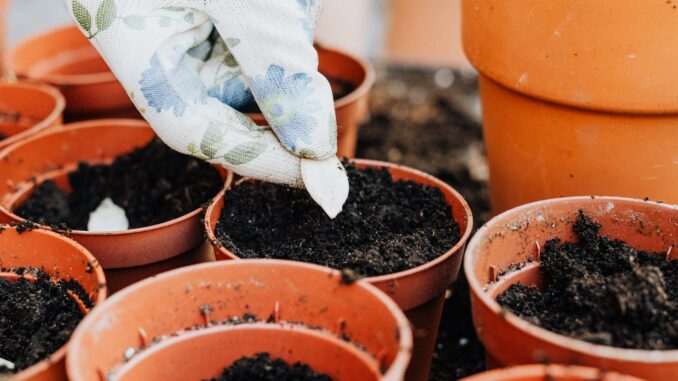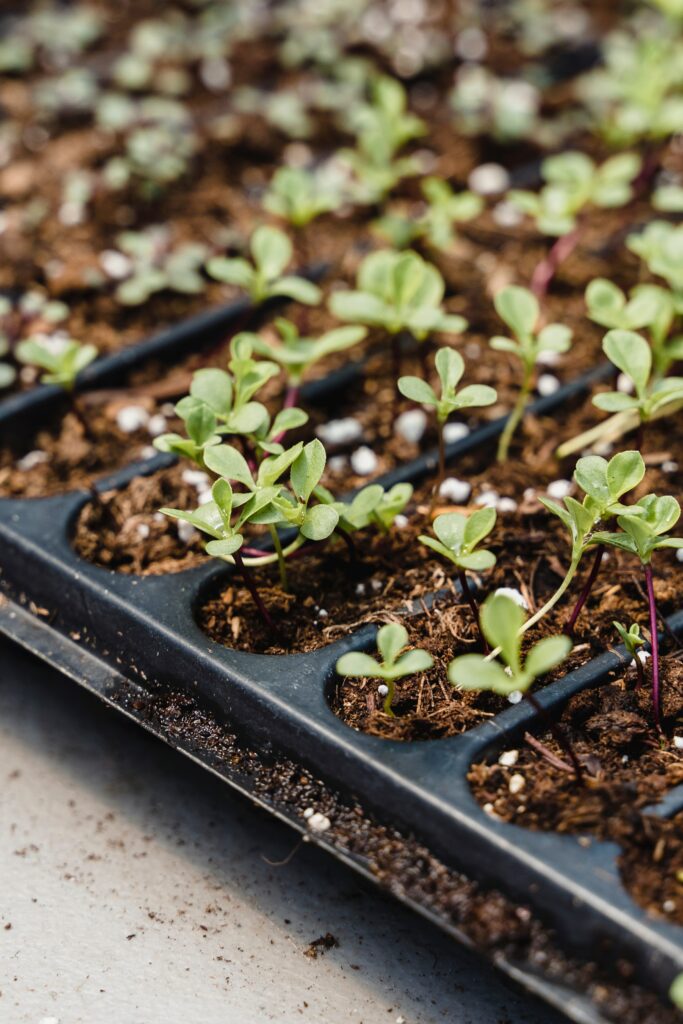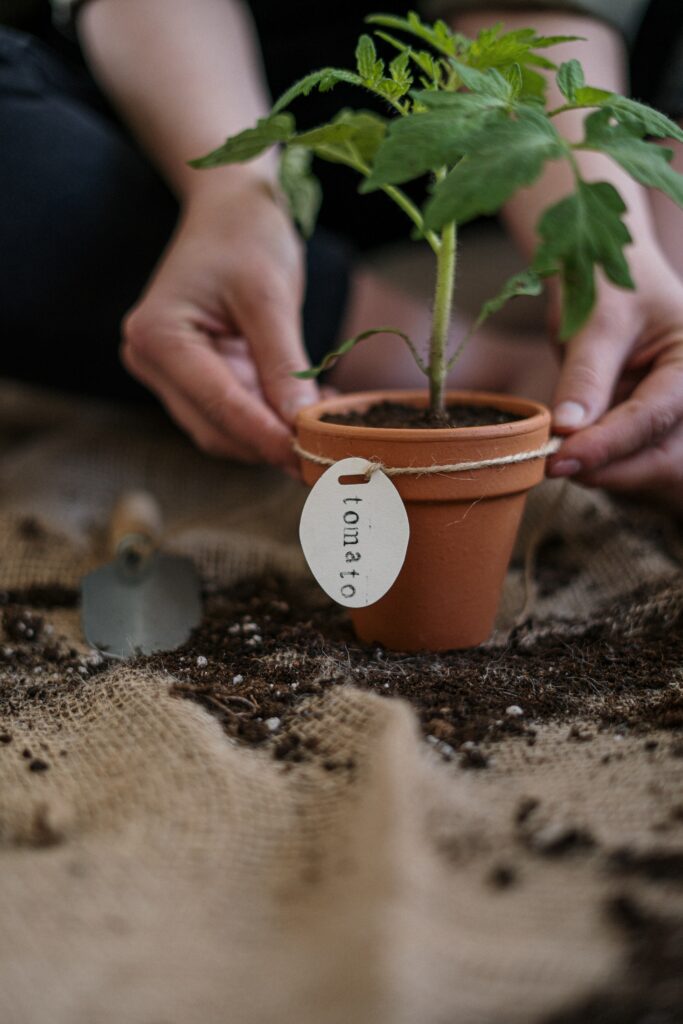
by Laurel Thompson | Fort Collins Nursery
With spring right around the corner, many of us have been busting out our seed packets and getting to work. March is a great time to plant vegetable seeds indoors so they’re ready to transfer into the garden after our last frost, giving us a head-start on our short growing season (and ultimately a more bountiful harvest).
Starting vegetables from seed indoors is quite simple. Gather up a few seed starting trays and fill them with a nutrient-dense seed starting soil, such as Black Gold Seedling Mix, then sow your seeds in pairs according to the seed depth listed on the packet. Once all your seeds are planted, top off the pockets with a little more soil and gently water them in.
Label your seeds with the type of vegetable and the day they were planted on marker sticks, also noting their germination period so you know how long they’ll take to sprout (usually a week to 14 days). Additionally, most vegetables take 50-80 days from planting to date of harvest, which is why starting them indoors in early spring is usually more efficient than planting them in the garden months later.
Seeds also need about 12 hours of bright light per day in order to germinate, so be sure to place your trays in a south-facing window or supplement lower-light areas with full-spectrum grow lights. Both fluorescent and LED grow lights are available at your local nursery, and many of them come with entire systems that have shelves to house your seed trays indoors.

In bright light, the small cells will dry out quickly and will need water every day or even twice per day. The goal is to keep them evenly moist, but not soaked, so their roots stretch down to the base of the cell in search of more water. To avoid pushing your seeds below their ideal depth or blasting away the soil on top, use the mist setting on your hose or water them with a spray bottle during their first few weeks of growth.
Another way to speed up germination is to add humidity and heat to your seedling trays. Slip seedling heat mats under your trays and plug them in to warm your soil at about 10 degrees above room temperature, then cover them with a clear plastic lid to trap in humidity as the warmth causes moisture to evaporate out of the soil.

Once your seeds develop a few true leaves (they’ll look different from the germination leaves), remove the lid from your trays to prevent bacteria growth and give them room to breathe. As they push out more and more true leaves, give your seedlings a boost of low-dose fish emulsion or another organic fertilizer, then transplant them into slightly larger pots to make room for more roots.
After the last frost passes in mid-May, it’s finally safe to transfer your vegetable starts into your garden or raised beds. Make sure your soil is amended with the right ingredients — a raised bed mix, soil conditioner, well-aged compost, etc. — and add a veggie fertilizer, like FoxFarm Happy Frog Tomato & Vegetable Fertilizer, to the holes before you plant. Then gently tuck your vegetable starts into their new home, water them in and watch them take off.
Support Northern Colorado Journalism
Show your support for North Forty News by helping us produce more content. It's a kind and simple gesture that will help us continue to bring more content to you.
BONUS - Donors get a link in their receipt to sign up for our once-per-week instant text messaging alert. Get your e-copy of North Forty News the moment it is released!
Click to Donate